Socialization: the role of the family

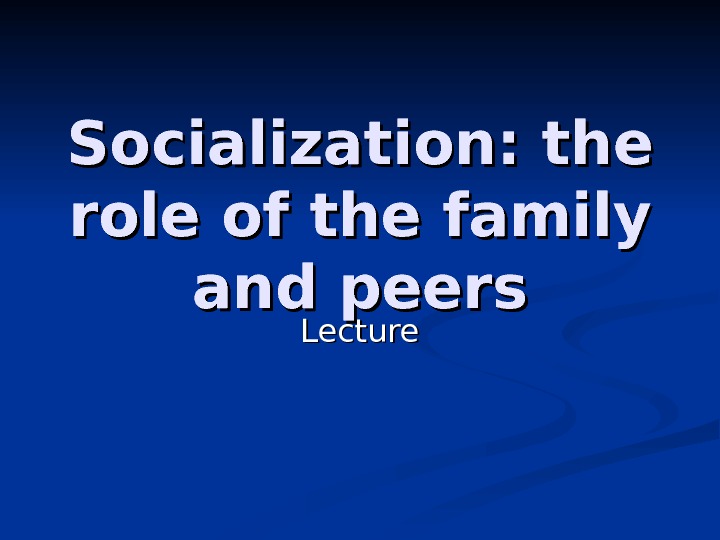
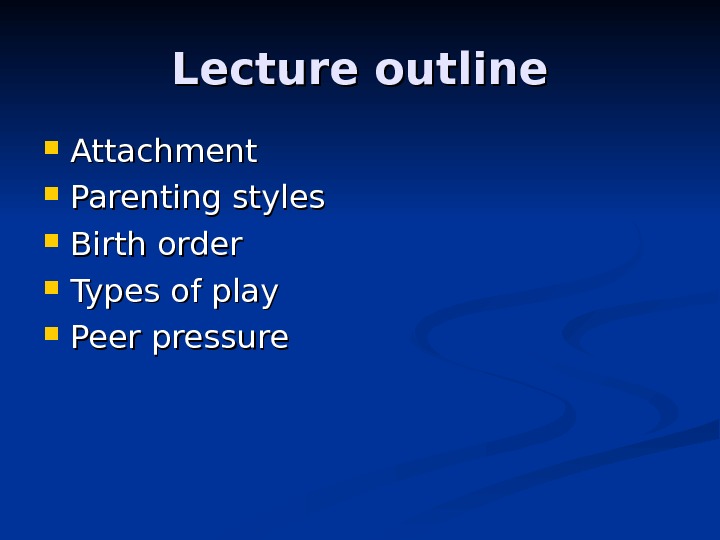
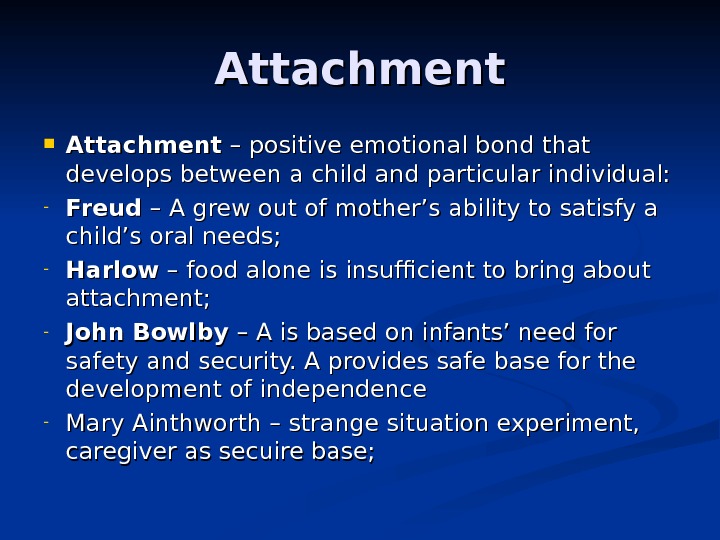
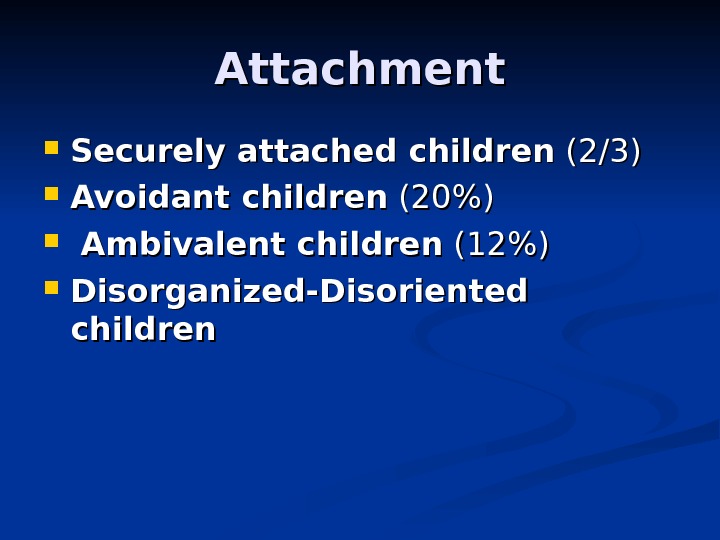
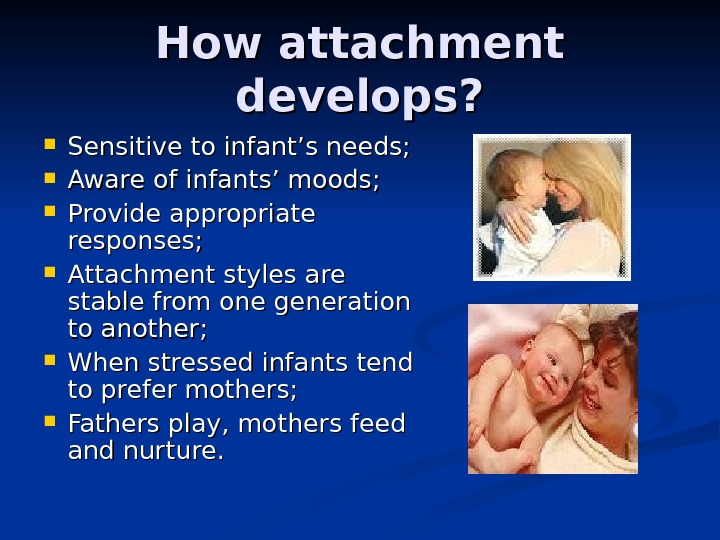
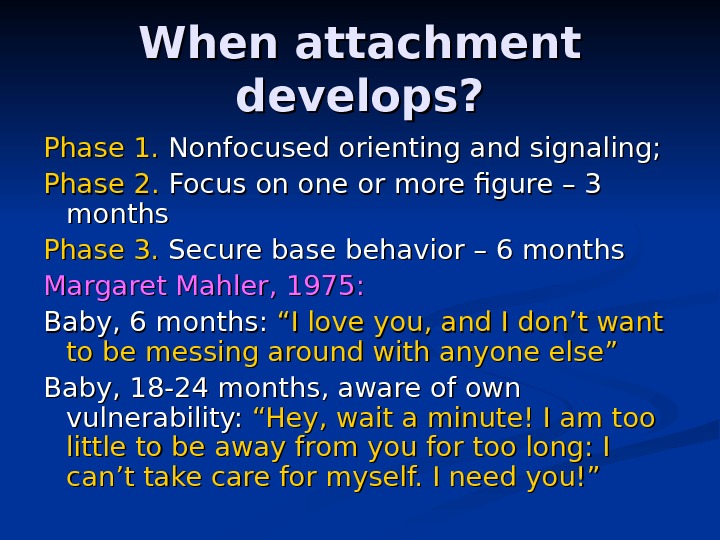
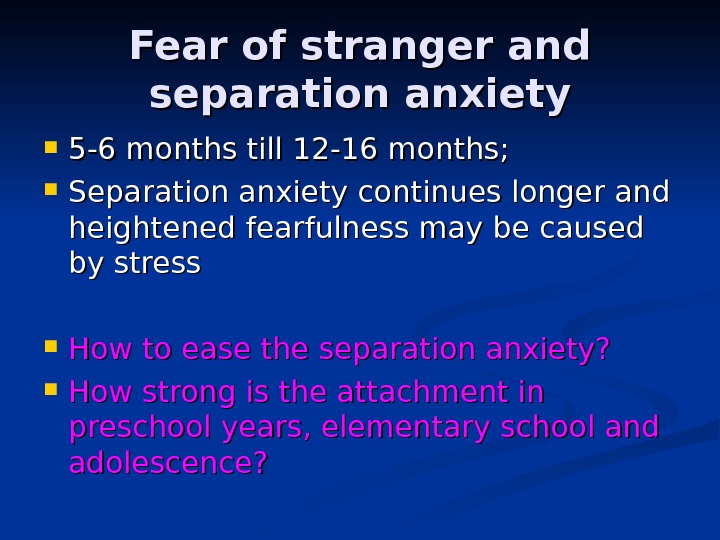
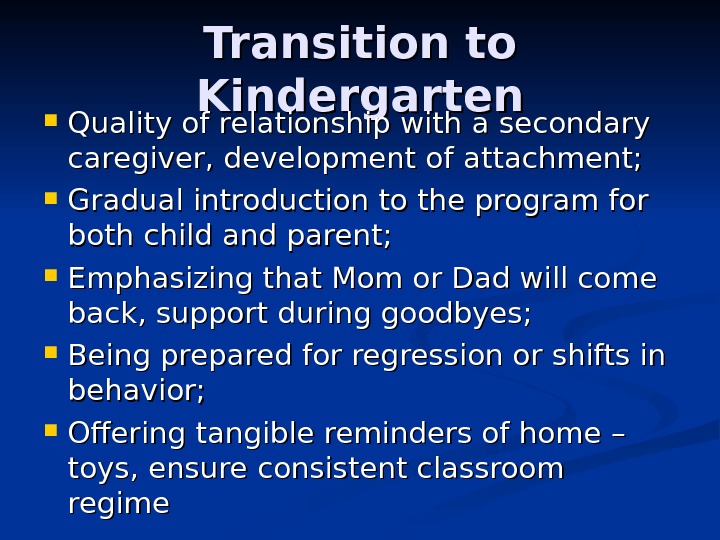
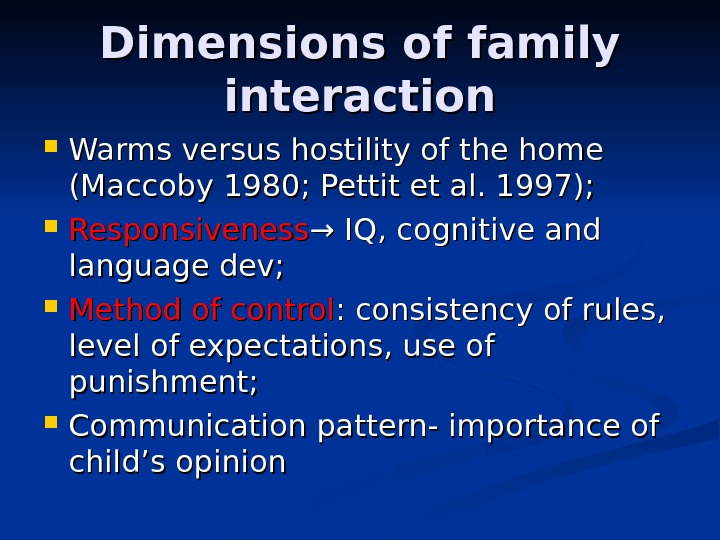
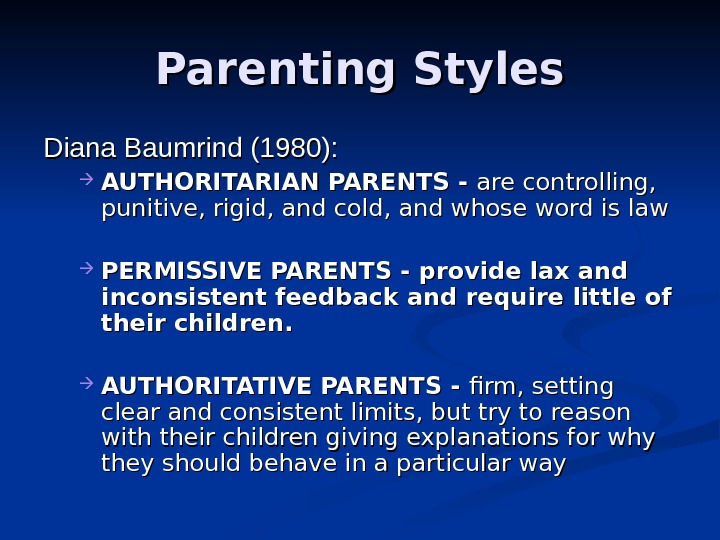

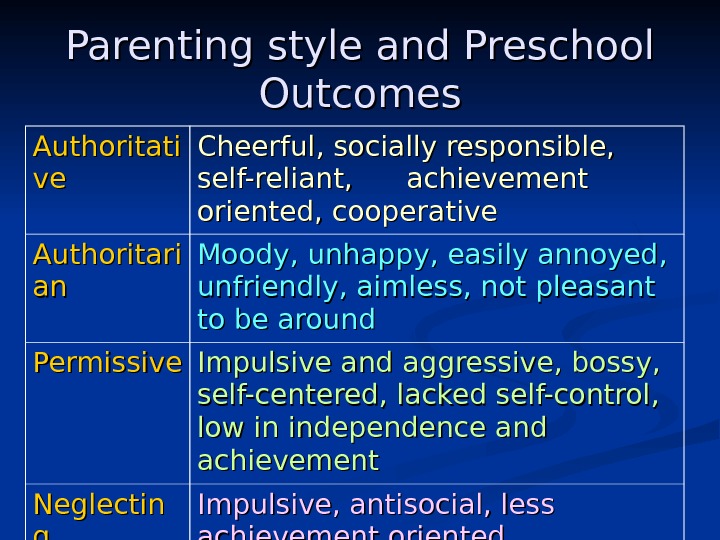
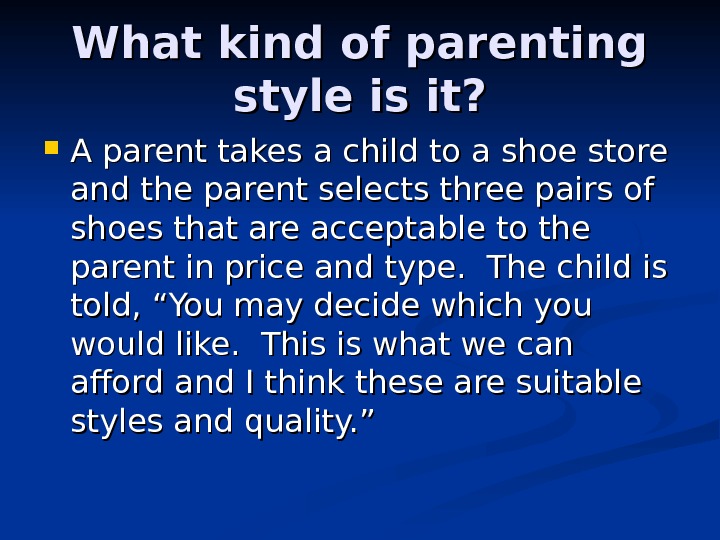
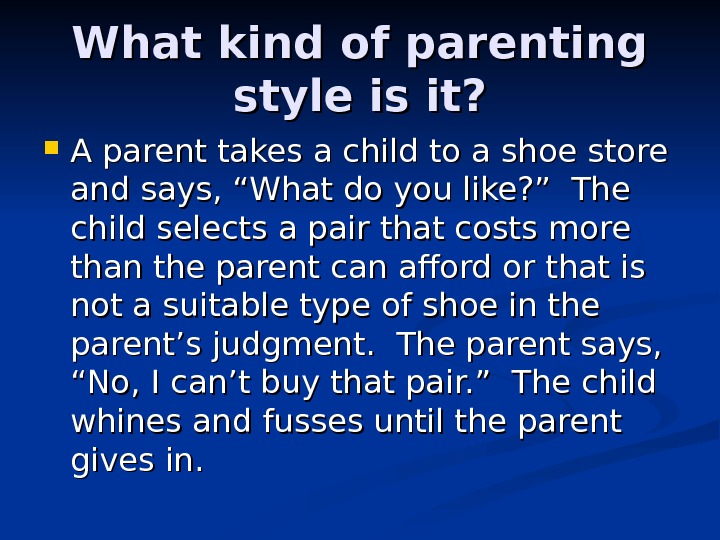
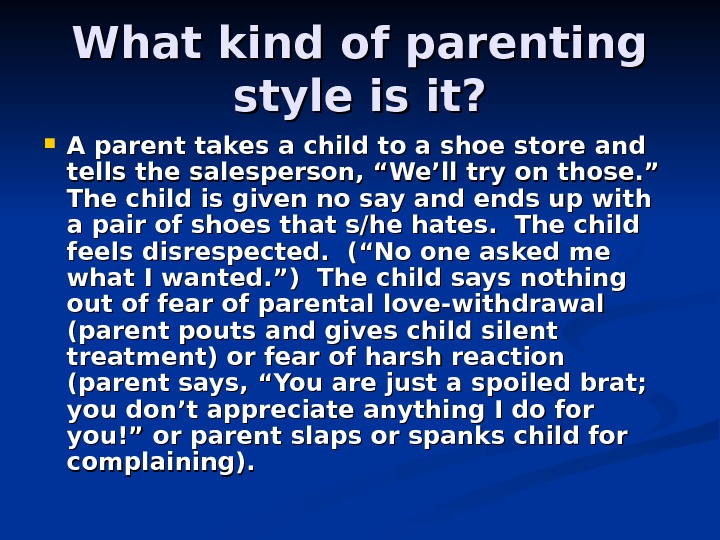
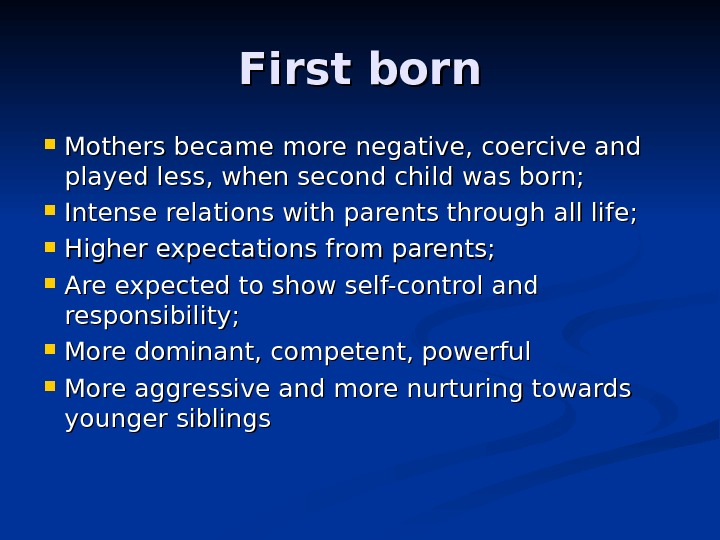
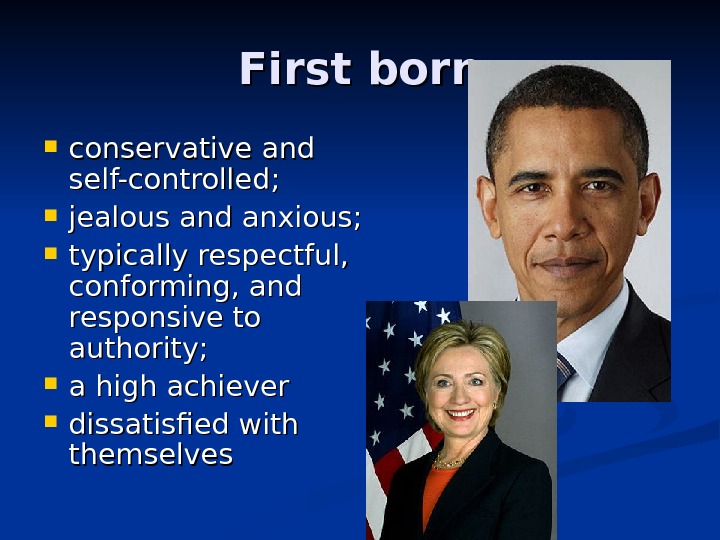
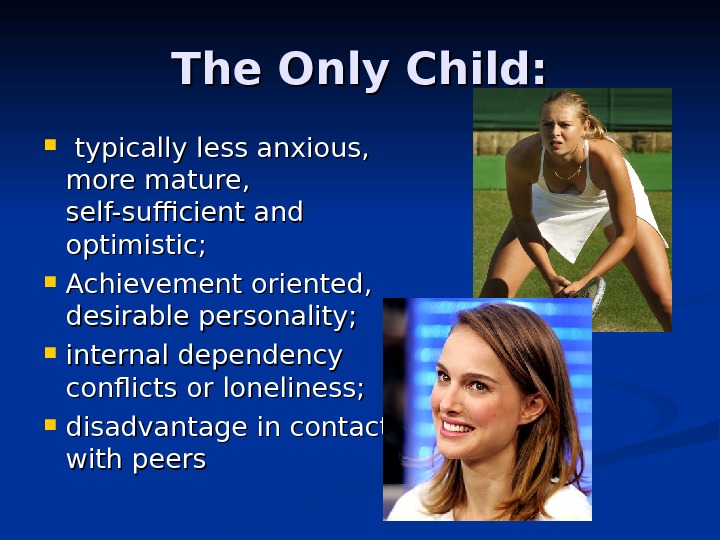
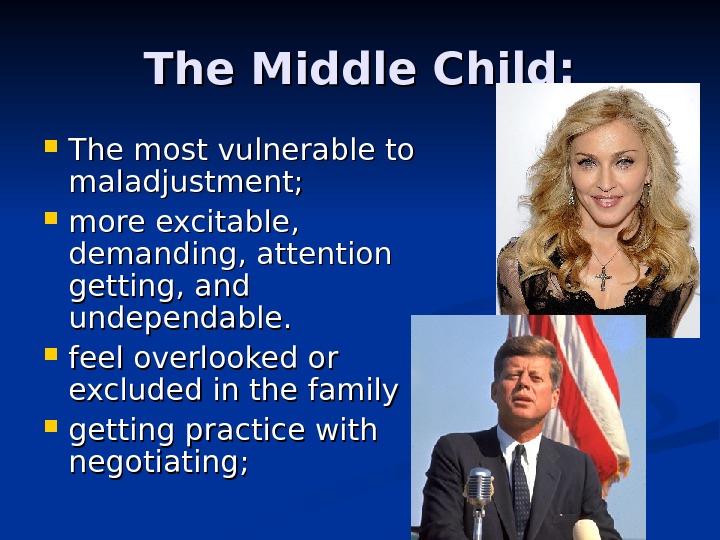
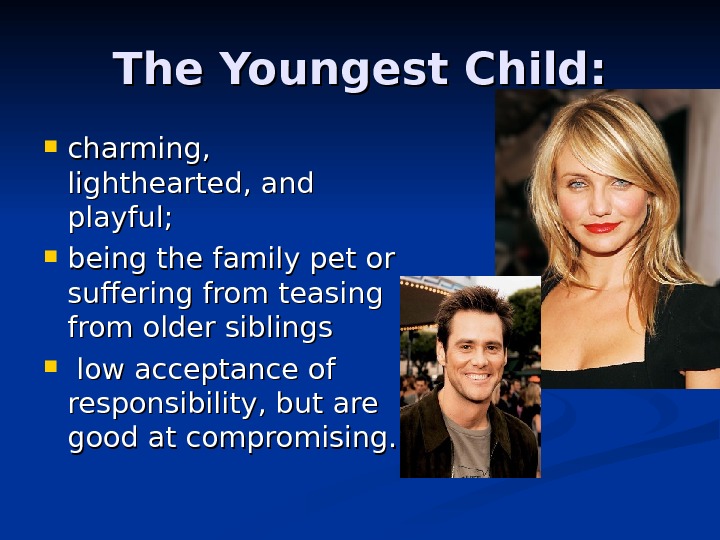
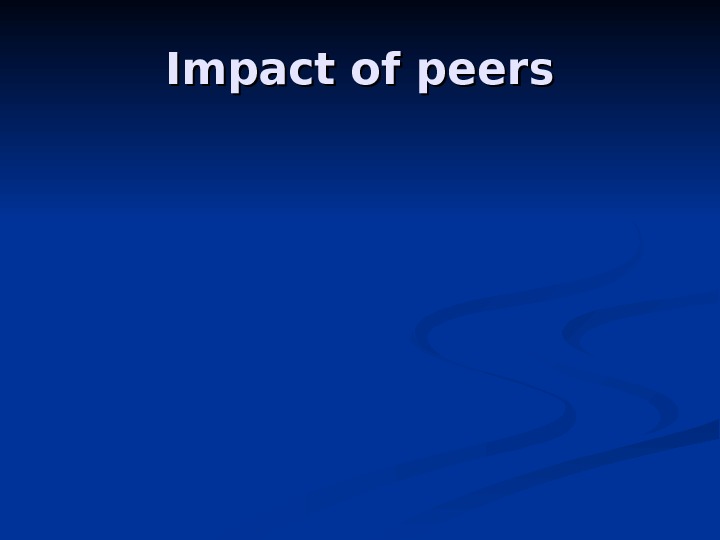
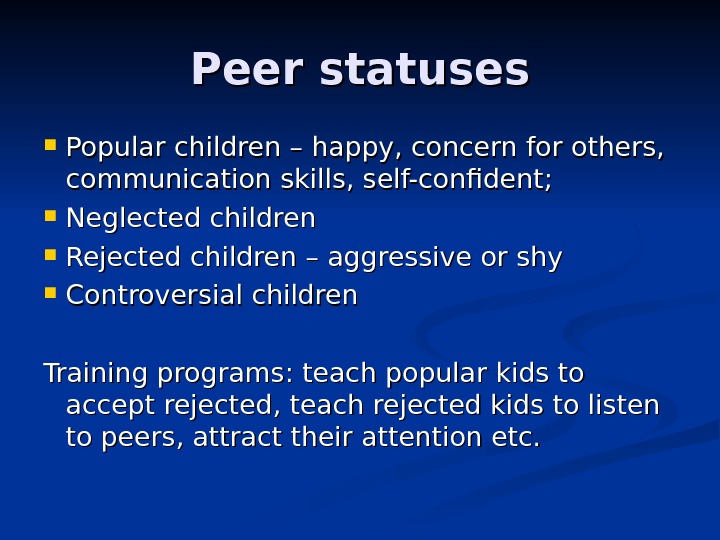

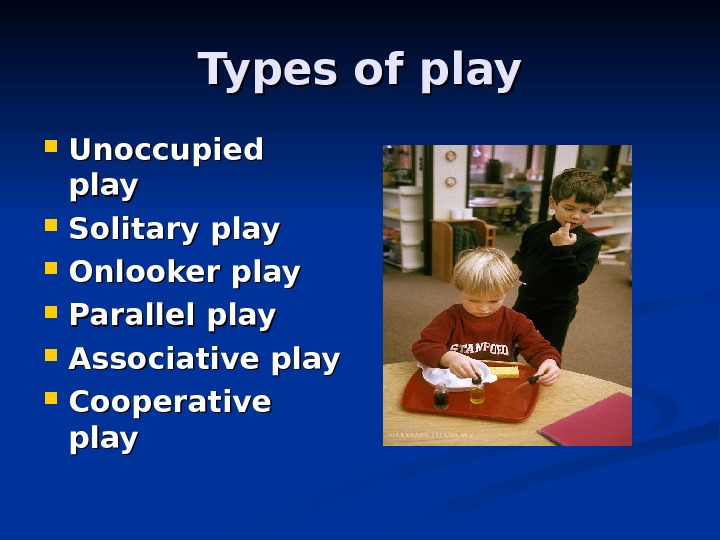
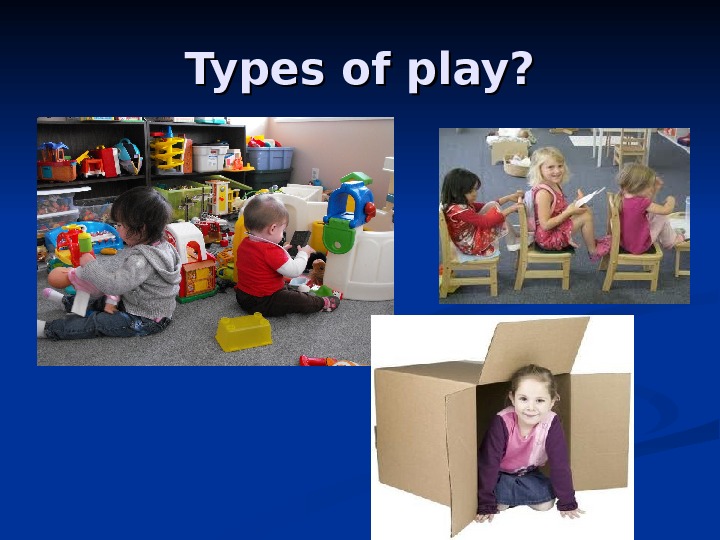
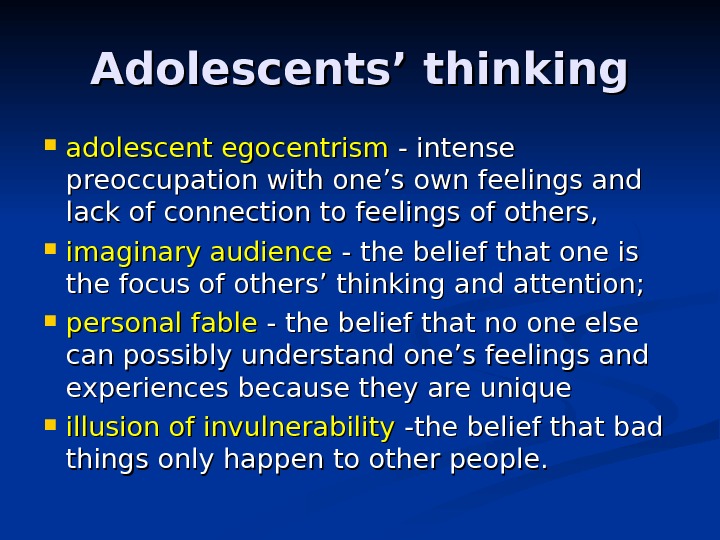
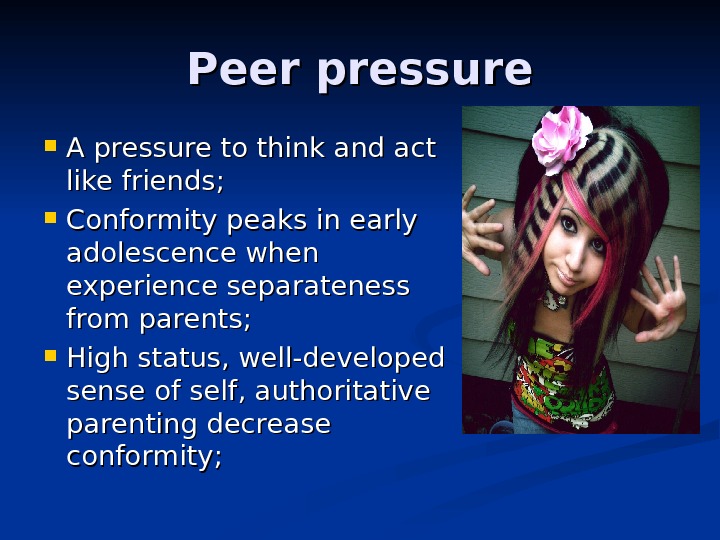
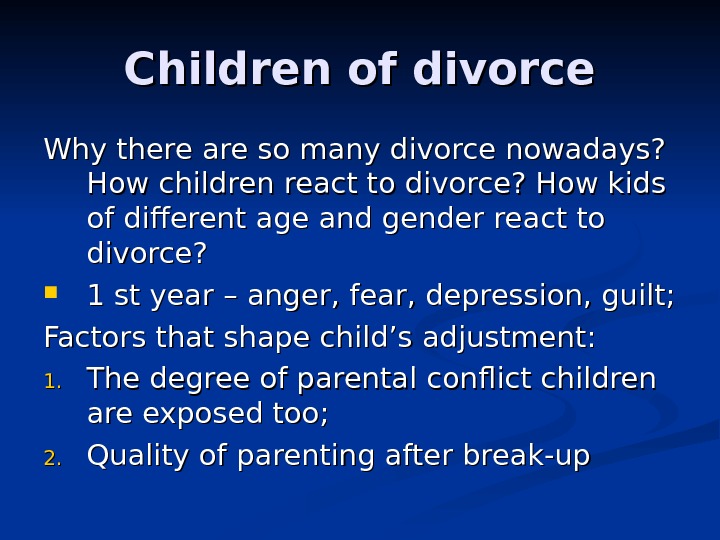
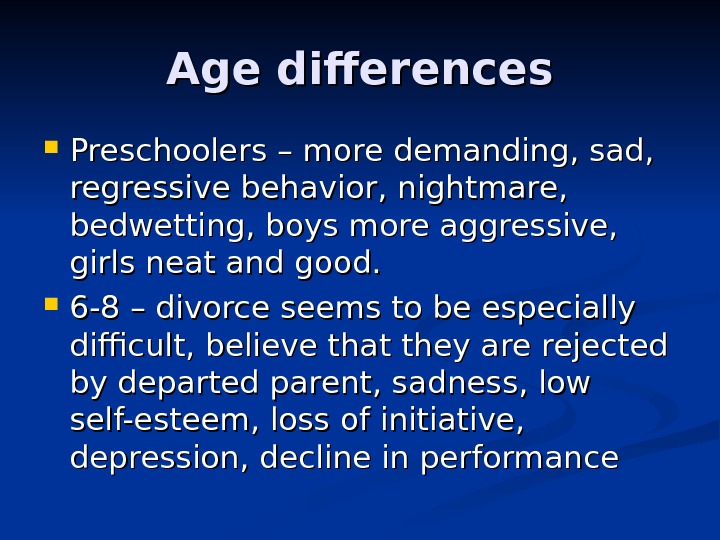
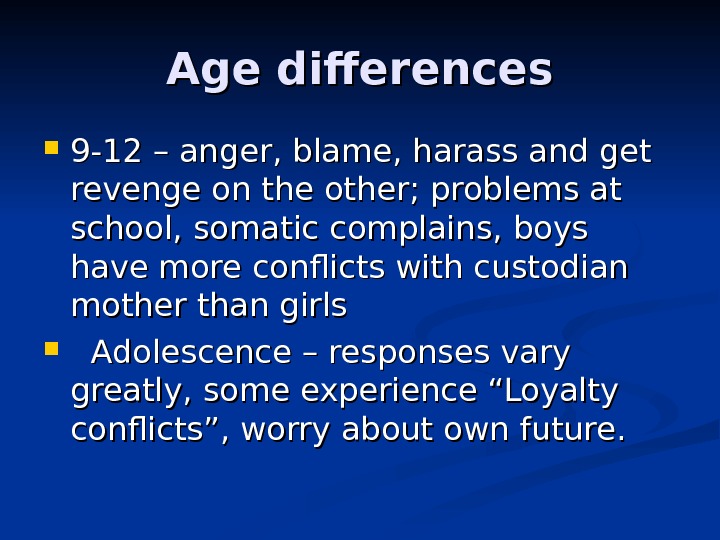
- Размер: 1.6 Mегабайта
- Количество слайдов: 30
Описание презентации Socialization: the role of the family по слайдам
 Socialization: the role of the family and peers Lecture
Socialization: the role of the family and peers Lecture
 Lecture outline Attachment Parenting styles Birth order Types of play Peer pressure
Lecture outline Attachment Parenting styles Birth order Types of play Peer pressure
 Attachment – positive emotional bond that develops between a child and particular individual: — Freud – A grew out of mother’s ability to satisfy a child’s oral needs; — Harlow – food alone is insufficient to bring about attachment; — John Bowlby – A is based on infants’ need for safety and security. A provides safe base for the development of independence — Mary Ainthworth – strange situation experiment, caregiver as secuire base;
Attachment – positive emotional bond that develops between a child and particular individual: — Freud – A grew out of mother’s ability to satisfy a child’s oral needs; — Harlow – food alone is insufficient to bring about attachment; — John Bowlby – A is based on infants’ need for safety and security. A provides safe base for the development of independence — Mary Ainthworth – strange situation experiment, caregiver as secuire base;
 Attachment Securely attached children (2/3) Avoidant children (20%) Ambivalent children (12%) Disorganized-Disoriented children
Attachment Securely attached children (2/3) Avoidant children (20%) Ambivalent children (12%) Disorganized-Disoriented children
 How attachment develops? Sensitive to infant’s needs; Aware of infants’ moods; Provide appropriate responses; Attachment styles are stable from one generation to another; When stressed infants tend to prefer mothers; Fathers play, mothers feed and nurture.
How attachment develops? Sensitive to infant’s needs; Aware of infants’ moods; Provide appropriate responses; Attachment styles are stable from one generation to another; When stressed infants tend to prefer mothers; Fathers play, mothers feed and nurture.
 When attachment develops? Phase 1. Nonfocused orienting and signaling; Phase 2. Focus on one or more figure – 3 months Phase 3. Secure base behavior – 6 months Margaret Mahler, 1975: Baby, 6 months: “I love you, and I don’t want to be messing around with anyone else” Baby, 18 -24 months, aware of own vulnerability: “Hey, wait a minute! I am too little to be away from you for too long: I can’t take care for myself. I need you!”
When attachment develops? Phase 1. Nonfocused orienting and signaling; Phase 2. Focus on one or more figure – 3 months Phase 3. Secure base behavior – 6 months Margaret Mahler, 1975: Baby, 6 months: “I love you, and I don’t want to be messing around with anyone else” Baby, 18 -24 months, aware of own vulnerability: “Hey, wait a minute! I am too little to be away from you for too long: I can’t take care for myself. I need you!”
 Fear of stranger and separation anxiety 5 -6 months till 12 -16 months; Separation anxiety continues longer and heightened fearfulness may be caused by stress How to ease the separation anxiety? How strong is the attachment in preschool years, elementary school and adolescence?
Fear of stranger and separation anxiety 5 -6 months till 12 -16 months; Separation anxiety continues longer and heightened fearfulness may be caused by stress How to ease the separation anxiety? How strong is the attachment in preschool years, elementary school and adolescence?
 Transition to Kindergarten Quality of relationship with a secondary caregiver, development of attachment; Gradual introduction to the program for both child and parent; Emphasizing that Mom or Dad will come back, support during goodbyes; Being prepared for regression or shifts in behavior; Offering tangible reminders of home – toys, ensure consistent classroom regime
Transition to Kindergarten Quality of relationship with a secondary caregiver, development of attachment; Gradual introduction to the program for both child and parent; Emphasizing that Mom or Dad will come back, support during goodbyes; Being prepared for regression or shifts in behavior; Offering tangible reminders of home – toys, ensure consistent classroom regime
 Dimensions of family interaction Warms versus hostility of the home (Maccoby 1980; Pettit et al. 1997); Responsiveness → IQ, cognitive and language dev; Method of control : consistency of rules, level of expectations, use of punishment; Communication pattern- importance of child’s opinion
Dimensions of family interaction Warms versus hostility of the home (Maccoby 1980; Pettit et al. 1997); Responsiveness → IQ, cognitive and language dev; Method of control : consistency of rules, level of expectations, use of punishment; Communication pattern- importance of child’s opinion
 Parenting Styles Diana Baumrind (1980): AUTHORITARIAN PARENTS — are controlling, punitive, rigid, and cold, and whose word is law PERMISSIVE PARENTS — provide lax and inconsistent feedback and require little of their children. AUTHORITATIVE PARENTS — firm, setting clear and consistent limits, but try to reason with their children giving explanations for why they should behave in a particular way
Parenting Styles Diana Baumrind (1980): AUTHORITARIAN PARENTS — are controlling, punitive, rigid, and cold, and whose word is law PERMISSIVE PARENTS — provide lax and inconsistent feedback and require little of their children. AUTHORITATIVE PARENTS — firm, setting clear and consistent limits, but try to reason with their children giving explanations for why they should behave in a particular way
 Maccoby and Martin, 1983 Indulgent, Permissive Neglecting. Authoritarian. Authoritative , reciprocal Level of control or demand Level of acceptance /responsiveness High Low
Maccoby and Martin, 1983 Indulgent, Permissive Neglecting. Authoritarian. Authoritative , reciprocal Level of control or demand Level of acceptance /responsiveness High Low
 Parenting style and Preschool Outcomes Authoritati veve Cheerful, socially responsible, self-reliant, achievement oriented, cooperative Authoritari anan Moody, unhappy, easily annoyed, unfriendly, aimless, not pleasant to be around Permissive Impulsive and aggressive, bossy, self-centered, lacked self-control, low in independence and achievement Neglectin gg Impulsive, antisocial, less achievement oriented
Parenting style and Preschool Outcomes Authoritati veve Cheerful, socially responsible, self-reliant, achievement oriented, cooperative Authoritari anan Moody, unhappy, easily annoyed, unfriendly, aimless, not pleasant to be around Permissive Impulsive and aggressive, bossy, self-centered, lacked self-control, low in independence and achievement Neglectin gg Impulsive, antisocial, less achievement oriented
 What kind of parenting style is it? A parent takes a child to a shoe store and the parent selects three pairs of shoes that are acceptable to the parent in price and type. The child is told, “You may decide which you would like. This is what we can afford and I think these are suitable styles and quality. ”
What kind of parenting style is it? A parent takes a child to a shoe store and the parent selects three pairs of shoes that are acceptable to the parent in price and type. The child is told, “You may decide which you would like. This is what we can afford and I think these are suitable styles and quality. ”
 What kind of parenting style is it? A parent takes a child to a shoe store and says, “What do you like? ” The child selects a pair that costs more than the parent can afford or that is not a suitable type of shoe in the parent’s judgment. The parent says, “No, I can’t buy that pair. ” The child whines and fusses until the parent gives in.
What kind of parenting style is it? A parent takes a child to a shoe store and says, “What do you like? ” The child selects a pair that costs more than the parent can afford or that is not a suitable type of shoe in the parent’s judgment. The parent says, “No, I can’t buy that pair. ” The child whines and fusses until the parent gives in.
 What kind of parenting style is it? A parent takes a child to a shoe store and tells the salesperson, “We’ll try on those. ” The child is given no say and ends up with a pair of shoes that s/he hates. The child feels disrespected. (“No one asked me what I wanted. ”) The child says nothing out of fear of parental love-withdrawal (parent pouts and gives child silent treatment) or fear of harsh reaction (parent says, “You are just a spoiled brat; you don’t appreciate anything I do for you!” or parent slaps or spanks child for complaining).
What kind of parenting style is it? A parent takes a child to a shoe store and tells the salesperson, “We’ll try on those. ” The child is given no say and ends up with a pair of shoes that s/he hates. The child feels disrespected. (“No one asked me what I wanted. ”) The child says nothing out of fear of parental love-withdrawal (parent pouts and gives child silent treatment) or fear of harsh reaction (parent says, “You are just a spoiled brat; you don’t appreciate anything I do for you!” or parent slaps or spanks child for complaining).
 First born Mothers became more negative, coercive and played less, when second child was born; Intense relations with parents through all life; Higher expectations from parents; Are expected to show self-control and responsibility; More dominant, competent, powerful More aggressive and more nurturing towards younger siblings
First born Mothers became more negative, coercive and played less, when second child was born; Intense relations with parents through all life; Higher expectations from parents; Are expected to show self-control and responsibility; More dominant, competent, powerful More aggressive and more nurturing towards younger siblings
 First born conservative and self-controlled; jealous and anxious; typically respectful, conforming, and responsive to authority; a high achiever dissatisfied with themselves
First born conservative and self-controlled; jealous and anxious; typically respectful, conforming, and responsive to authority; a high achiever dissatisfied with themselves
 The Only Child: typically less anxious, more mature, self-sufficient and optimistic; Achievement oriented, desirable personality; internal dependency conflictsor loneliness; disadvantage in contact with peers
The Only Child: typically less anxious, more mature, self-sufficient and optimistic; Achievement oriented, desirable personality; internal dependency conflictsor loneliness; disadvantage in contact with peers
 The Middle Child: The most vulnerable to maladjustment; more excitable, demanding, attention getting, and undependable. feel overlooked or excluded in the family getting practice with negotiating;
The Middle Child: The most vulnerable to maladjustment; more excitable, demanding, attention getting, and undependable. feel overlooked or excluded in the family getting practice with negotiating;
 The Youngest Child: charming, lighthearted, and playful; being the family pet or suffering from teasing from older siblings low acceptance of responsibility, but are good at compromising.
The Youngest Child: charming, lighthearted, and playful; being the family pet or suffering from teasing from older siblings low acceptance of responsibility, but are good at compromising.
 Impact of peers
Impact of peers
 Peer statuses Popular children – happy, concern for others, communication skills, self-confident; Neglected children Rejected children – aggressive or shy Controversial children Training programs: teach popular kids to accept rejected, teach rejected kids to listen to peers, attract their attention etc.
Peer statuses Popular children – happy, concern for others, communication skills, self-confident; Neglected children Rejected children – aggressive or shy Controversial children Training programs: teach popular kids to accept rejected, teach rejected kids to listen to peers, attract their attention etc.
 Bullying Bullies parents – rejecting, authoritarian, permissive on their kid’s aggression; Victims’ parents – overprotective, anxious; Consequences for victims – become depressed, lost interest in school, low self-esteem;
Bullying Bullies parents – rejecting, authoritarian, permissive on their kid’s aggression; Victims’ parents – overprotective, anxious; Consequences for victims – become depressed, lost interest in school, low self-esteem;
 Types of play Unoccupied play Solitary play Onlooker play Parallel play Associative play Cooperative play
Types of play Unoccupied play Solitary play Onlooker play Parallel play Associative play Cooperative play
 Types of play?
Types of play?
 Adolescents’ thinking adolescent egocentrism — intense preoccupation with one’s own feelings and lack of connection to feelings of others, imaginary audience — the belief that one is the focus of others’ thinking and attention; personal fable — the belief that no one else can possibly understand one’s feelings and experiences because they are unique illusion of invulnerability -the belief that bad things only happen to other people.
Adolescents’ thinking adolescent egocentrism — intense preoccupation with one’s own feelings and lack of connection to feelings of others, imaginary audience — the belief that one is the focus of others’ thinking and attention; personal fable — the belief that no one else can possibly understand one’s feelings and experiences because they are unique illusion of invulnerability -the belief that bad things only happen to other people.
 Peer pressure A pressure to think and act like friends; Conformity peaks in early adolescence when experience separateness from parents; High status, well-developed sense of self, authoritative parenting decrease conformity;
Peer pressure A pressure to think and act like friends; Conformity peaks in early adolescence when experience separateness from parents; High status, well-developed sense of self, authoritative parenting decrease conformity;
 Children of divorce Why there are so many divorce nowadays? How children react to divorce? How kids of different age and gender react to divorce? 1 st year – anger, fear, depression, guilt; Factors that shape child’s adjustment: 1. 1. The degree of parental conflict children are exposed too; 2. 2. Quality of parenting after break-up
Children of divorce Why there are so many divorce nowadays? How children react to divorce? How kids of different age and gender react to divorce? 1 st year – anger, fear, depression, guilt; Factors that shape child’s adjustment: 1. 1. The degree of parental conflict children are exposed too; 2. 2. Quality of parenting after break-up
 Age differences Preschoolers – more demanding, sad, regressive behavior, nightmare, bedwetting, boys more aggressive, girls neat and good. 6 -8 – divorce seems to be especially difficult, believe that they are rejected by departed parent, sadness, low self-esteem, loss of initiative, depression, decline in performance
Age differences Preschoolers – more demanding, sad, regressive behavior, nightmare, bedwetting, boys more aggressive, girls neat and good. 6 -8 – divorce seems to be especially difficult, believe that they are rejected by departed parent, sadness, low self-esteem, loss of initiative, depression, decline in performance
 Age differences 9 -12 – anger, blame, harass and get revenge on the other; problems at school, somatic complains, boys have more conflicts with custodian mother than girls Adolescence – responses vary greatly, some experience “Loyalty conflicts”, worry about own future.
Age differences 9 -12 – anger, blame, harass and get revenge on the other; problems at school, somatic complains, boys have more conflicts with custodian mother than girls Adolescence – responses vary greatly, some experience “Loyalty conflicts”, worry about own future.

